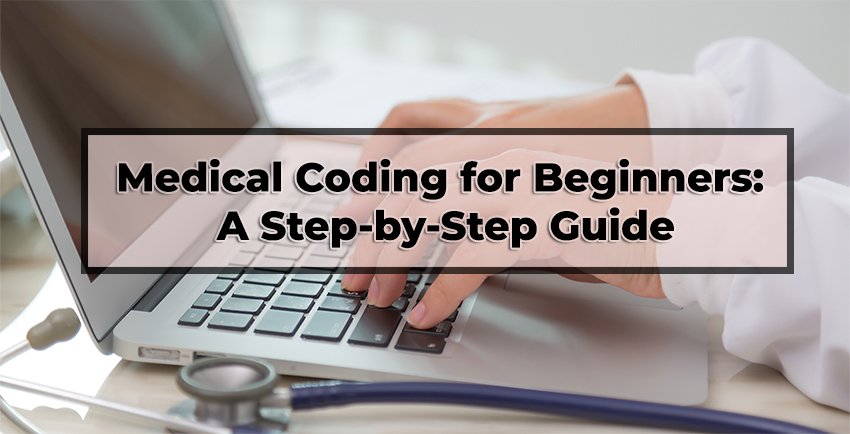Medical Coding for Beginners: A Step-by-Step Guide
Medical coding is a critical process that ensures healthcare providers and insurance companies communicate effectively regarding patient treatments, diagnoses, and billing. As a beginner, learning medical coding might seem complex, but with the right approach, it can be a manageable and rewarding career path. This step-by-step guide will take you through the fundamentals of medical coding, what to expect when starting, and how to excel in this profession.

Step 1: Understand What Medical Coding Is
Medical coding is the translation of medical reports into standardized codes. These codes represent healthcare diagnoses, procedures, medical services, and equipment used during patient care. The codes are primarily used for billing and insurance purposes but also help track diseases and treatment outcomes in healthcare systems.
There are three main coding systems:
- ICD-10-CM (International Classification of Diseases, 10th Edition, Clinical Modification): Used for diagnosing diseases.
- CPT (Current Procedural Terminology): Used to code medical procedures and services.
- HCPCS (Healthcare Common Procedure Coding System): Used for services, procedures, and equipment not covered by CPT codes.
Step 2: Explore the Role of a Medical Coder
Medical coders play a vital role in healthcare by ensuring accurate coding and billing. Their responsibilities include:
- Reviewing medical records and ensuring proper documentation.
- Assigning the correct codes for diagnoses and procedures.
- Ensuring compliance with regulations and coding standards.
- Collaborating with healthcare providers to clarify unclear or incomplete information.
- Submitting claims for reimbursement and resolving coding-related billing issues.
Step 3: Familiarize Yourself with Medical Terminology
Understanding medical terminology is a crucial skill for medical coders. This knowledge allows you to translate clinical data into the correct codes. Terms related to anatomy, diseases, treatments, and medical procedures are commonly encountered.
How to Learn Medical Terminology:
- Take courses specifically focused on medical terminology.
- Use flashcards or apps to learn new terms regularly.
- Practice reading medical records and reports to understand how medical terms are used in context.
Step 4: Learn the Medical Coding Systems
As mentioned earlier, the three primary coding systems are ICD-10-CM, CPT, and HCPCS. Each coding system serves a different purpose, and it’s important to familiarize yourself with each. Let's explore each in more detail.
ICD-10-CM
The ICD-10-CM is used to code diagnoses, allowing the classification of diseases and health conditions. For instance, if a patient is diagnosed with bronchitis, a specific code from the ICD-10-CM is used to represent that diagnosis.
CPT Codes
The CPT system is used to describe the medical services provided to patients, including diagnostic and surgical procedures. This system helps in billing for services performed during patient visits.
HCPCS Codes
The HCPCS system is mainly used for coding medical services, products, and equipment that are not covered by the CPT codes, particularly for Medicare and Medicaid claims.
Step 5: Understand the Importance of Accuracy
Accuracy in medical coding is vital to ensuring proper reimbursement and compliance with healthcare regulations. Errors in coding can result in denied claims, delayed payments, and even legal penalties. As a coder, you must be detail-oriented and diligent in reviewing and applying codes.
Common Mistakes to Avoid:
- Incorrectly matching diagnoses and procedure codes.
- Failing to keep up with updates to coding systems.
- Misunderstanding payer-specific coding guidelines.
- Not verifying documentation accuracy.
Step 6: Choose the Right Medical Coding Course
To become proficient in medical coding, you’ll need formal training. There are numerous courses and certifications available for beginners. Ensure that the course you select covers all coding systems (ICD-10-CM, CPT, and HCPCS) and includes hands-on practice.
Things to Look for in a Course:
- Accreditation by reputable coding organizations such as AAPC or AHIMA.
- Coverage of real-world coding scenarios and practical applications.
- Opportunities for mentorship or peer interaction.
- Preparation for certification exams.
Step 7: Obtain a Certification
Medical coding certifications are highly valued and often required by employers. The two most recognized certifications are:
- CPC (Certified Professional Coder): Issued by the AAPC, this certification focuses on outpatient coding.
- CCA (Certified Coding Associate): Offered by AHIMA, this certification is ideal for those just starting and covers both inpatient and outpatient coding.
Why Get Certified?
- Certification demonstrates your expertise in medical coding.
- It increases job opportunities and earning potential.
- It prepares you to handle more complex coding situations.
Step 8: Build Your Coding Skills
Once you have completed a coding course and obtained certification, it’s important to continue building your skills. The best way to do this is by gaining hands-on experience through internships or entry-level coding positions.
Tips for Gaining Experience:
- Participate in medical coding internships or externships.
- Practice coding with real or simulated medical records.
- Join coding forums or networks to learn from other coders’ experiences.
- Attend coding workshops or webinars to stay current with industry changes.
Step 9: Master Medical Documentation
Being able to read and interpret medical records is one of the most important skills for a medical coder. Familiarize yourself with the different sections of a patient’s medical record, including progress notes, operative reports, and discharge summaries.
Key Documentation Sections to Focus On:
- Diagnosis: Identifies the patient’s condition and must match the appropriate ICD-10-CM code.
- Procedures: Describes treatments and services performed, which will correspond to CPT or HCPCS codes.
- Date of Service: It’s crucial to document when the service was provided to ensure timely billing.
- Provider Notes: These are vital for clarifying ambiguities in the patient’s treatment or condition.
Step 10: Keep Up with Industry Updates
Medical coding is an evolving field. Coding guidelines, compliance regulations, and payer requirements frequently change. To succeed as a medical coder, you must stay current with these changes.
Resources for Staying Updated:
- Subscribe to coding newsletters or industry publications.
- Attend conferences or online webinars hosted by coding associations.
- Participate in local or national coding organizations like AAPC or AHIMA.
Step 11: Prepare for Job Opportunities
After completing your training and obtaining certification, it's time to start applying for medical coding positions. Entry-level positions can help you gain valuable experience and build your resume. Many healthcare facilities, including hospitals, clinics, and insurance companies, hire medical coders.
Where to Look for Jobs:
- Healthcare providers (hospitals, clinics, outpatient centers).
- Insurance companies and payer organizations.
- Government agencies (e.g., Medicare and Medicaid).
- Medical billing and coding service companies.
Step 12: Advance Your Career
After gaining experience as a medical coder, you can explore opportunities for career advancement. Specialized coding certifications, such as those for medical auditing or compliance, can lead to higher-paying roles and leadership positions. You can also consider becoming a coding educator or consultant.
Options for Career Growth:
- Specialize in a specific medical field, such as oncology or cardiology coding.
- Pursue additional certifications, such as Certified Inpatient Coder (CIC) or Certified Coding Specialist (CCS).
- Transition into coding management or auditing positions.
- Start a medical coding consulting business.
Medical coding is an essential and growing profession in the healthcare industry. For beginners, the journey can be challenging, but with the right steps, you can build a rewarding career in medical coding. By understanding the coding systems, obtaining proper training, and staying updated on industry changes, you’ll be well on your way to becoming a proficient and successful medical coder.

